Bearcats at the Zoo
Learning conservation from the best
Students and faculty get hands-on experience with animals at the city’s world-class zoo
A University of Cincinnati adjunct professor flew to Indonesia this year to visit some old friends, Harapan and Andalas.
They are Sumatran rhinos born at the Cincinnati Zoo & Botanical Garden and repatriated back to Indonesia to be part of a managed breeding program. The rhinos are on the very brink of extinction with just 80 surviving individuals. Only six have been born under managed care. The future of the species is uncertain.
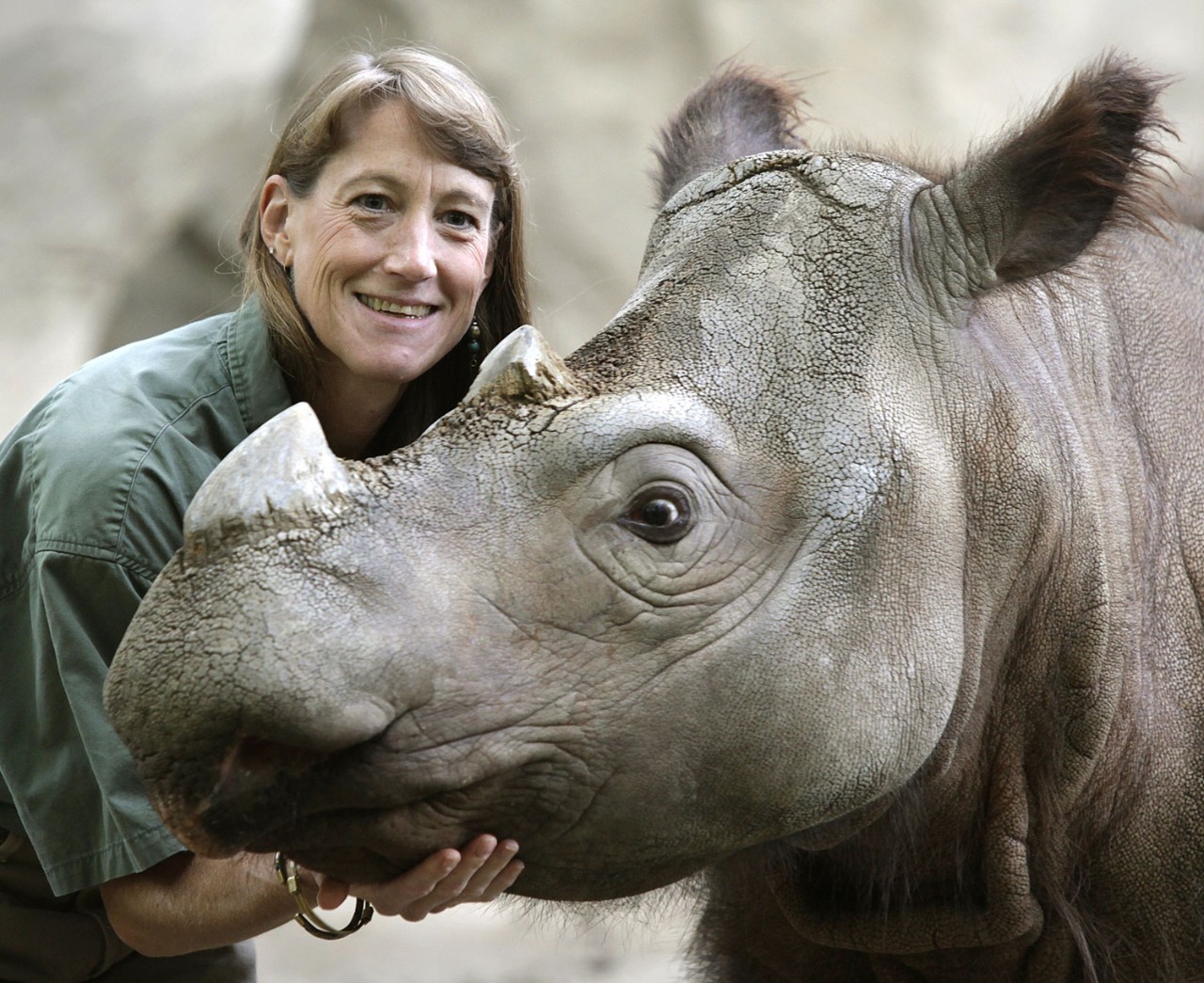
UC adjunct professor Terri Roth works with endangered rhinos, including this Sumatran rhino named Suci. Photo/Michael Keating
Terri Roth, an adjunct professor of biology at UC and the Cincinnati zoo’s vice president for conservation and science, helped the nonprofit institution successfully produce three babies. As director of the zoo’s Center for Conservation and Research of Endangered Wildlife or CREW, she is sharing the zoo’s collective knowledge with the team of experts at the Sumatran Rhino Sanctuary in Way Kambas National Park, Indonesia.
“I have great confidence in the team working there,” Roth said. “They have adopted all the practices we developed at the Cincinnati Zoo. They are producing calves, so fingers crossed.”
Roth’s position with UC is just one of several connections between the research university and the zoo named the best in North America in 2022 by USA Today. UC students and faculty have collaborated with the Cincinnati Zoo on a variety of projects in veterinary research, animal behavior and physiology, engineering and enrichment.
“It’s been a great relationship between UC and CREW,” Roth said.
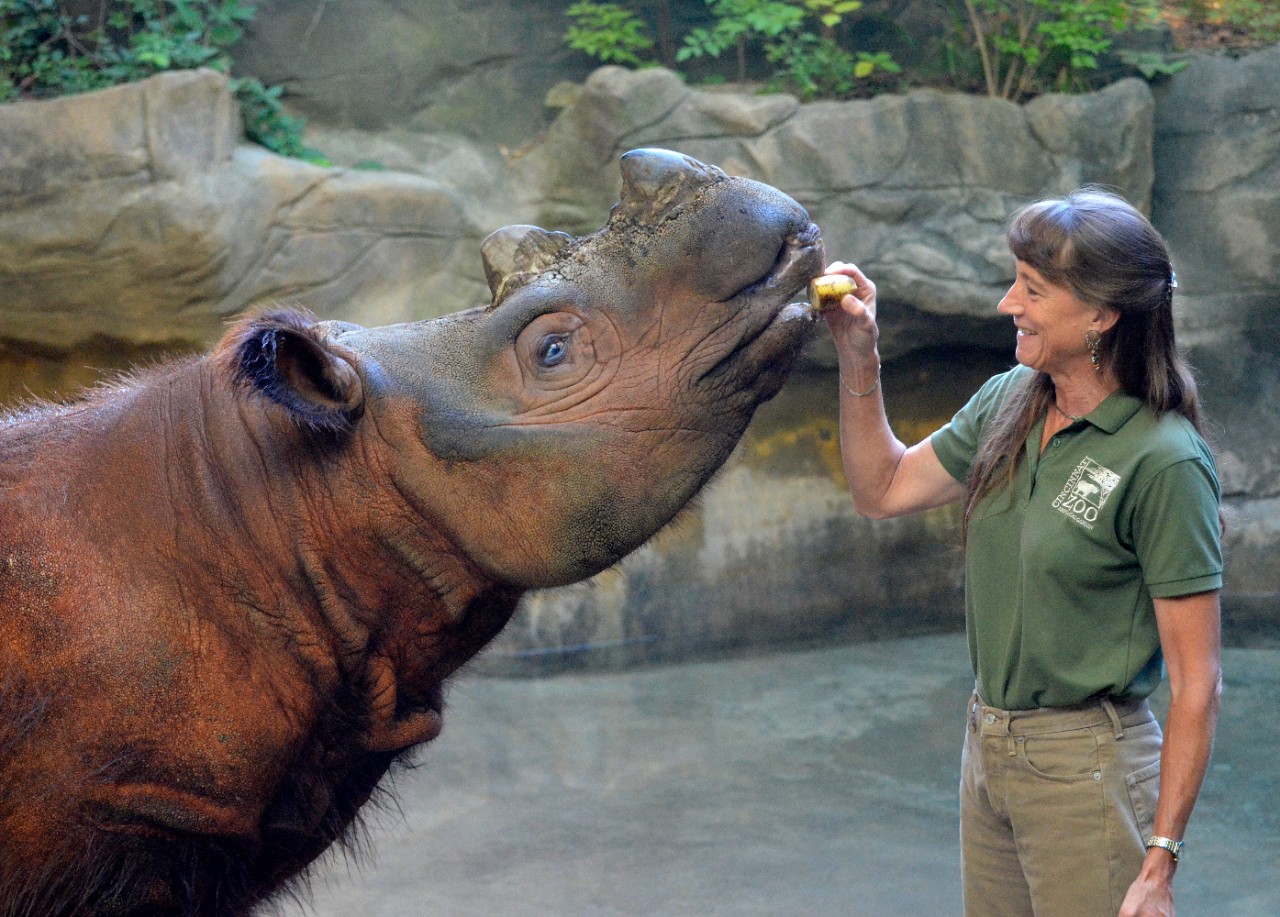
The Cincinnati Zoo & Botanical Garden sent Sumatran rhino Harapan to Indonesia for a breeding program that could be the species' last hope of survival. UC adjunct professor Terri Roth is helping Indonesia replicate the Cincinnati zoo's success in its managed breeding program. Photo/Cincinnati Zoo
These collaborations are having a real-world impact on wildlife around the world. Time is not on their side. Rhinos are in trouble almost everywhere they are found. Poaching wiped out the northern white rhino and the black rhino in many parts of Africa. The Javan rhino is nearly extinct.
Roth organized a coalition of rhino experts to ensure the well-being of rhinos with the goal to improve their health, fitness and reproductive success. So far, almost 50 zoos across North America have joined Roth’s coalition, the American Institute of Rhinoceros Science, funded in part by the Institute of Museum and Library Services.
The Cincinnati Zoo’s logo features a black rhino. Its newest addition, Ajani Joe, was born in 2020.
The rapid decline of Sumatran and Javan rhinos showed how quickly species can go extinct. Roth said she is hoping the combined rhino expertise she is helping to assemble will provide a safety net both for animals living in the wild and in zoos.
Rhinos in some places are poached for the keratin in their horns, which has no medicinal value but is sold as a cure-all by criminal wildlife traffickers. The illicit sale of rhino horn generated more than $170 million between 2016 and 2018, according to the U.S. Fish and Wildlife Service.
“Elephants might raid crops, and tigers can kill people. But the rhino doesn’t do any of that,” she said. “I often ask, ‘What does it say about humanity if we can’t share the planet with a species that is not a threat to us or our food and is just living its life?’”
Some rhinos are susceptible to having an overabundance of iron in their organs that can cause damage, dysfunction or even death. Roth said iron storage could be an evolutionary adaptation to blood-sucking parasites like ticks and mosquitoes that inexorably drain a rhino’s blood through thousands of tiny bites. Because rhinos in zoos are spared from these pests, they conserve more iron than they might in the wild.
“Working on the Sumatran rhino project was a huge privilege. I feel very fortunate to be at a zoo with a facility committed to conservation research,” Roth said.
“We can hope they make a big comeback,” Roth said.
More UC Work at the Cincinnati Zoo
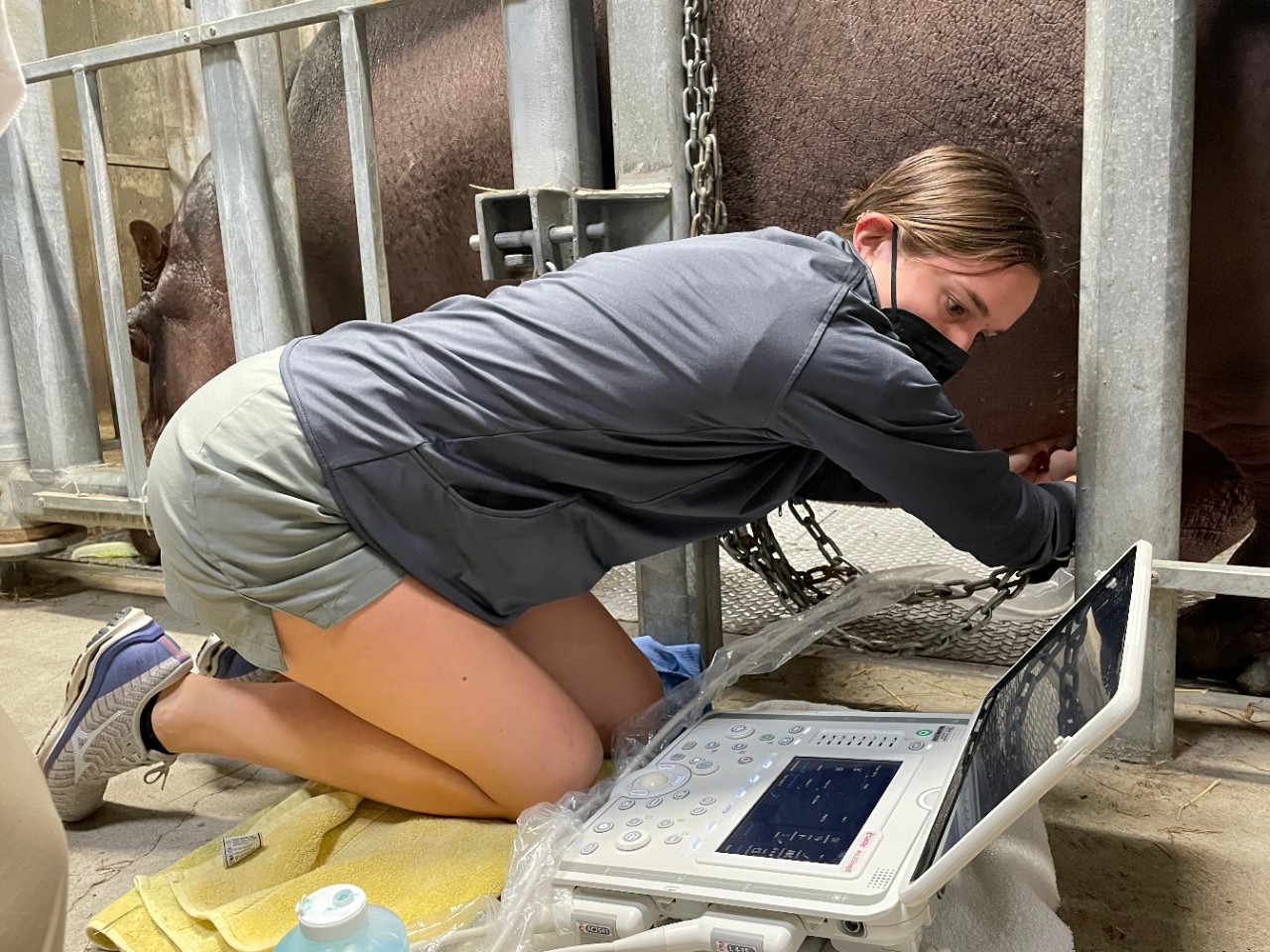
UC master's student and veterinarian Dr. Julie Barnes performs an ultrasound on a hippo at the Cincinnati Zoo & Botanical Garden. The hippo, Bibi, gave birth to Fritz earlier this year. Photo/Provided
How to give a hippo an ultrasound
How do you perform an ultrasound on a hippopotamus? Carefully.
Dr. Julie Barnes, a veterinarian and UC graduate student in biology, said it’s really no different from treating any other expectant mother.
Barnes is pursuing a master’s degree in biology in UC’s College of Arts and Sciences. Simultaneously, she’s working on a postdoctoral fellowship at the Cincinnati Zoo where she’s assigned to the big cat team at CREW.
At the zoo, she has performed ultrasounds on snow leopards and Amur tigers. When it was time to check the progress of Bibi, the zoo’s pregnant hippo, Barnes volunteered her expertise.
She captured sonograms of baby Fritz who has now joined his world-famous sister, Fiona, in Hippo Cove.
“Having the zoo within walking distance from campus is an incredible resource for the biology department at UC,” UC assistant professor of biology Elizabeth Hobson said. "We are constantly working to build more connections between UC and the Cincinnati Zoo to increase educational and training opportunities for our students.”
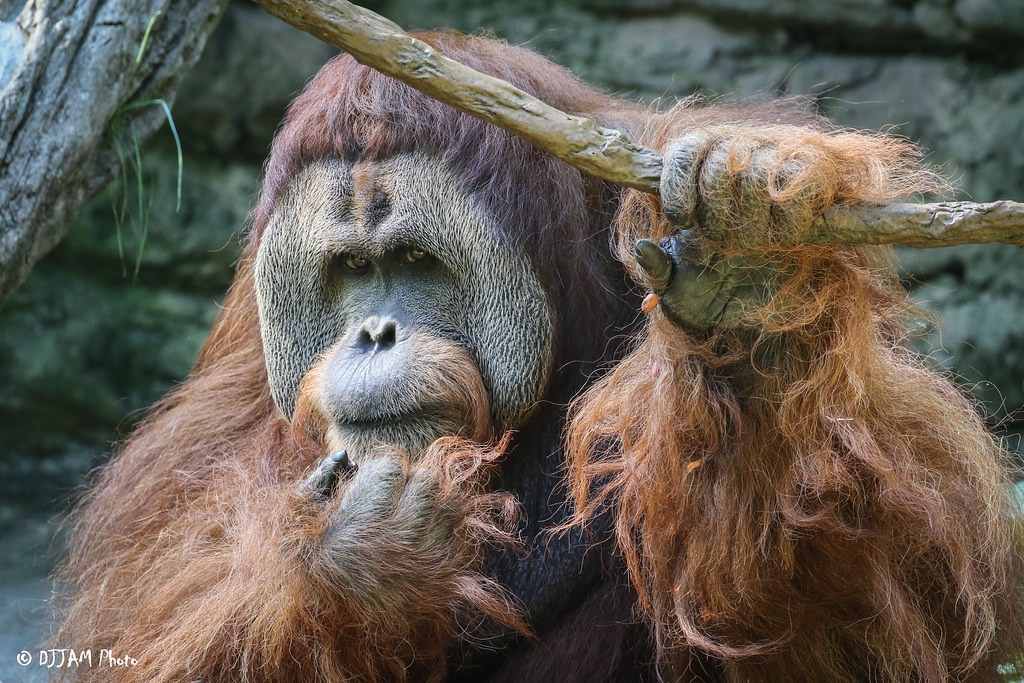
UC students helped design an adapter for a blood-pressure cuff for the Cincinnati Zoo & Botanical Garden's orangutans, bonobos and juvenile gorillas. Photo/DJJAM Photo/Cincinnati Zoo
Heart-healthy orangutans
It’s not easy giving a physical to an animal that’s stronger than four NFL linebackers.
To check vital statistics, zookeepers conditioned western lowland gorillas to slip their arms into a custom blood-pressure cuff. But the machine was designed for the burly arms of a silverback gorilla, not the skinny, lanky ones of an orangutan. So the zoo turned to engineering and industrial design majors at UC for a solution.
UC students Jack Buehler and Andie Ticknor, both industrial design graduates in UC’s College of Design, Architecture, Art, and Planning, teamed up with UC mechanical engineering graduate Ben Merk in UC’s College of Engineering and Applied Science to build custom 3D-printed inserts tailored to the arm sizes of the orangutans, bonobos and smaller juvenile gorillas.
“Great apes suffer from similar ailments as we do along with unique ones,” primate zookeeper Theresa Clyatt-Larson said. “Like humans, male gorillas and orangutans are at risk of heart disease.”

UC journalism graduate Emily Maxwell captured this image of Cincinnati Zoo & Botanical Garden keeper Paul Reinhart hugging Andalas, one of the zoo's rhinos that was repatriated to Indonesia. Photo/Emily Maxwell
Reporting from the front lines of wildlife conservation
UC College of Arts and Sciences journalism graduate Emily Maxwell was working for WCPO as a photojournalist when the Cincinnati Zoo announced it was sending the Western Hemisphere’s last Sumatran rhino back to Indonesia to save the species from extinction.
Maxwell knew a compelling story when she saw it. The public loved Harapan, the zoo’s shaggy rhino. And its experts had done what few other institutions had been able to: get the animals to reproduce in managed care. If anyone could save the species, it’s the experts at the Cincinnati Zoo.
Maxwell documented the rhino's 10,000-mile odyssey back to Indonesia where it joined other rhinos in the nation's managed breeding program.
Maxwell said what she remembers most about that experience was watching Cincinnati Zoo keeper Paul Reinhart say goodbye to Harapan after caring for him for so long in the neighborhood shared by UC.
UC journalism graduate Emily Maxwell traveled to Indonesia to highlight the plight of critically endangered Sumatran rhinos for WCPO.
“I was fortunate to witness some very tender, genuine moments between him and the rhino,” Maxwell said. “That's a side of keepers most people don't get to see.”
Today, Maxwell is an Emmy Award-winnning videographer for the city of Denver where she produces stories about underrepresented communities for its human rights office.
“The role of zoos has really transformed over the decades. The Cincinnati Zoo is a true leader in global conservation efforts, which I don't think many Cincinnatians realize,” Maxwell said. “I still remain hopeful the species can be revived.”
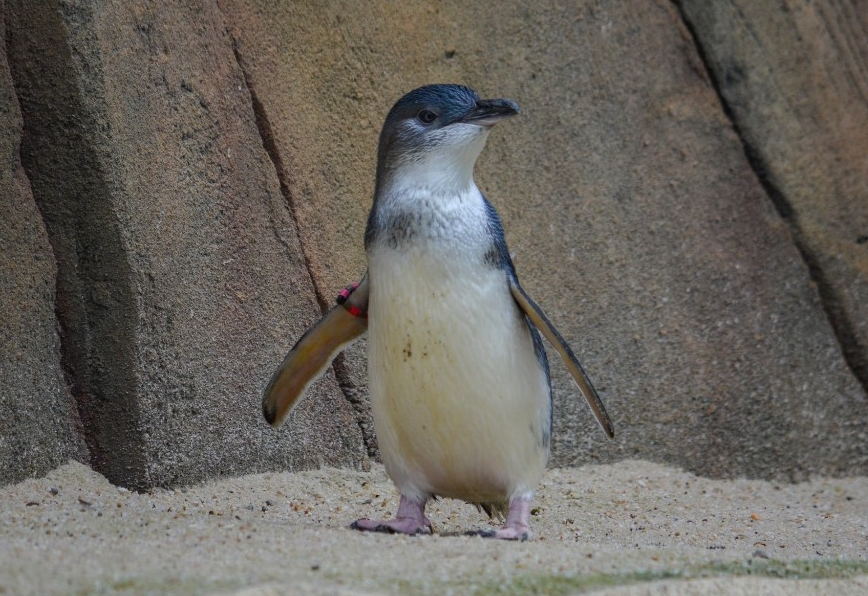
UC biology students studied fairy penguins with zookeepers at the Cincinnati Zoo & Botanical Garden. Photo/Matt Green for the University of Cincinnati
Would you vote for this penguin?
Do penguins have leaders?
A study of little blue penguins at the Cincinnati Zoo by UC assistant professor Elizabeth Hobson and her biology students seems to suggest as much.
Hobson’s students Chelsea Carminito, Sanjay Prasher and Austin Simon examined data collected from the zoo’s penguins, each with names like Mango, Jalapeño and Apple.
UC defined a leader as a penguin who enters a pool that has been empty for at least 30 minutes and has at least one penguin join him or her within a minute.
While they don’t have enough data yet to draw firm conclusions, the results suggest that no single penguin was a leader for the entire group.
"With only the exploratory research done, we can conclude there are some penguins that are leaders more than others," Simon said.

UC alumna Laura Carpenter is working with conservationists in Asia to help protect fishing cats. Photo/Joseph Fuqua/UC
All creatures great and small
Lions and tigers get a lot of attention from visitors at the Cincinnati Zoo & Botanical Garden.
But zookeeper and UC alumna Laura Carpenter said the diminutive fishing cat surprises her every day with its outsize personality and intelligence.
Carpenter, a UC biology graduate, secured a conservation grant from the zoo to purchase satellite tracking collars so researchers in Sri Lanka can identify the most important habitat for these adaptive little predators.
“I wanted to do something for small cats because they don’t get a lot of publicity compared to the big cats,” Carpenter said.
The felines are in decline across most of their range across India, Thailand and six other countries, according to the International Union for the Conservation of Nature. The group placed fishing cats on its “red list” of vulnerable or threatened species.
Carpenter said by knowing more about where the little cats go, conservation groups can make their preferred wildlife corridors safer to travel. The GPS collars have an accelerometer to track how quickly fishing cats navigate their habits, both rural and urban.

UC College of Engineering and Applied Science and College of Design, Architecture, Art, and Planning students collaborated on an enrichment feeder for the Cincinnati Zoo & Botanical Garden's giraffes. Photo/Provided
Giraffe Puzzle box
Wild giraffes spend a lot of time during the day plucking leaves off acacia trees while trying to avoid their sharp thorns.
This problem-solving behavior inspired an enrichment device designed by UC industrial design and engineering students.
DAAP assistant professor Francis Russell is director of UC Forward, a program that pairs students with experts and members of the community to solve real-world problems.
“Participating in the class is a transformative experience that makes students producers and not just consumers in the classroom,” Russell said.
The UC students worked with the zoo to design and build a clear plastic feeder box with holes barely big enough for the giraffes to reach their sticky, 20-inch-long, prehensile tongues inside to grab a piece of lettuce. Adding to the difficulty, a motor closes and opens different compartments so the giraffes have to investigate different holes to find the treats.
“The UC-zoo collaboration was a great opportunity to use the ideas and concepts I had been learning in my other classes,” engineering graduate Ben Merk said. “I got to work on a team with students from a different major which made the project more fun and helped me to look at things from a different perspective,” Merk said. “While working with the Cincinnati Zoo, I was continually impressed by the effort and ingenuity the zoo applies to ensure a world-class experience for both the animals and visitors.”
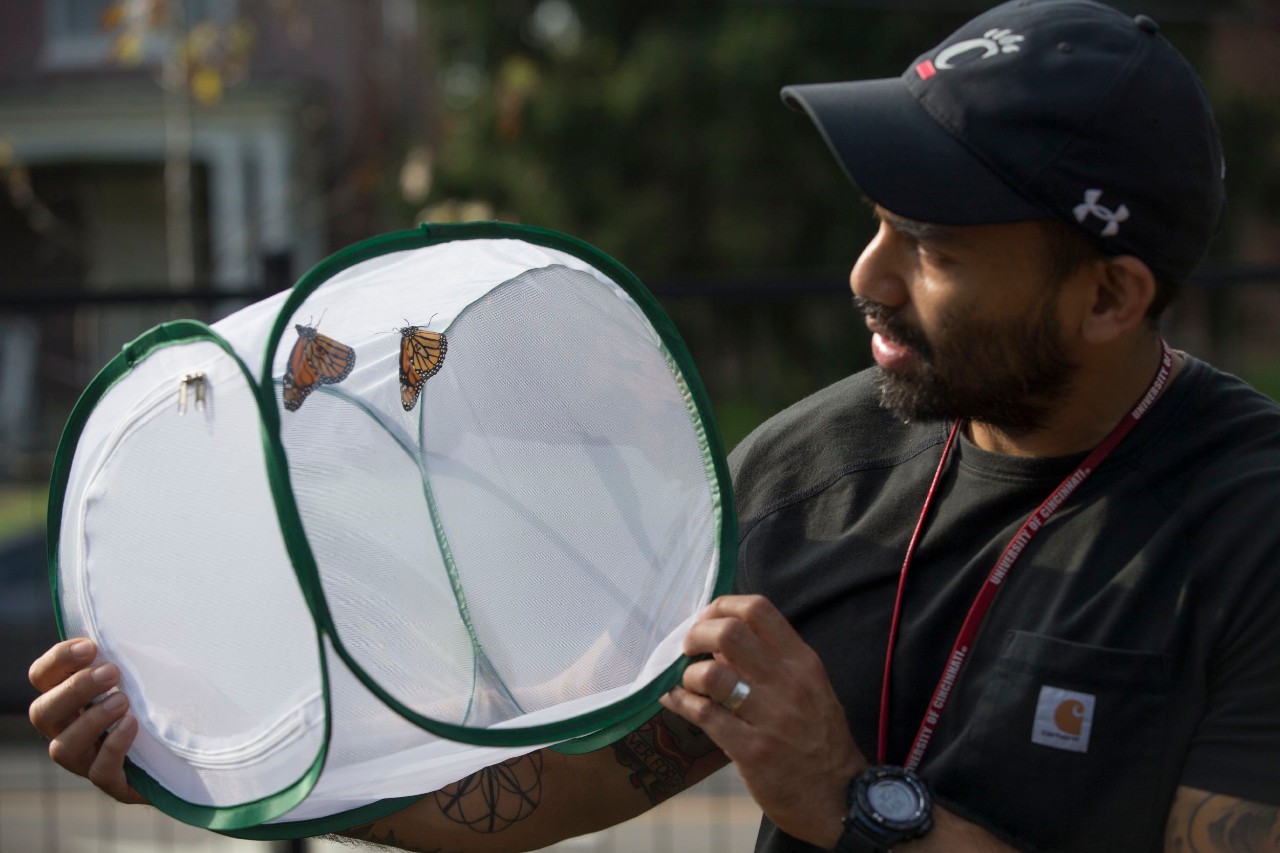
UC assistant professor Patrick Guerra studied Monarch butterfly navigation at the Cincinnati Zoo & Botanical Garden. Photo/Lisa Ventre/UC Marketing + Brand
Studying epic migrations
When UC biologist Patrick Guerra needed a pollinator garden to study Monarch butterfly migration, he immediately thought of the Cincinnati Zoo & Botanical Garden.
For one of his many studies on the epic multi-generational migration of these colorful insects, Guerra used one of the zoo’s many flower gardens.
“What’s amazing about monarchs is they go to the same general area in Mexico year after year, but they’ve never been there before. It’s their great-grandparents who were last there,” Guerra said.
Butterflies use a combination of a the sun’s position in the sky along with the Earth’s magnetic field as a guide.
UC students captured monarchs at UC’s Center for Field Studies next to Miami Whitewater Forest. Butterflies were placed in mesh enclosures at three rural locations, three suburban ones and three urban ones. There the butterflies were subjected to the ambient light and noise of city life or the darkness and tranquility of rural living.
One site was a flower garden a few blocks from UC at the zoo.
“Volunteers have adopted this garden. We have pollinator-friendly plants everywhere,” said Lyn Lutz, an exhibit manager at the zoo.
The zoo has exhibits on native plants throughout its 69 acres to encourage and inspire people to plant their own butterfly gardens, she said.
“Everyone should do their part,” she said. “You don’t need a big botanical garden. Anyone can do it.”
Featured video at top: Andrew Higley/UC Marketing + Brand
Digital design/Kerry Overstake/UC Digital + User Experience
Become a Bearcat
Whether you’re a first-generation student or from a family of Bearcats, UC is proud to support you at every step along your journey. We want to make sure you succeed — and feel right at home.
Related Stories
UC‘s College of Arts and Sciences taps innovative new leadership
December 20, 2023
The College of Arts and Sciences announced Ryan J. White and Rina Williams as the newest divisional deans of Natural Sciences and Social Sciences. White and Kennedy’s inclusion will bring new focuses and structure around student success and the college of Arts and Sciences’ advancement. Both will officially begin their new terms on Jan. 1, 2024.
What is UC’s 4 + 1 program?
December 4, 2023
You may be a UC student thinking about taking your education to the next level — UC’s College of Arts and Sciences has a pathway to help you do just that. A&S has no fewer than 15 five-year programs — from biological sciences to Spanish to psychology — where you can earn both your bachelor’s and master’s degrees in just five years, versus the traditional six-year track. The Bachelors and Master’s 4 + 1 Program is designed to increase your marketability and deepen your understanding of the subject matter. And in an increasingly competitive job market, you may want to investigate an additional year of study.
Clifton Court Hall grand opening garners detailed media coverage
September 20, 2023
The University of Cincinnati celebrated the opening of Clifton Court Hall on Tuesday, Sept. 19, with a ribbon cutting, attended by approximately 200 administrators, faculty, staff and students. The event was covered by multiple media outlets.
UC offers new social justice, Latin American studies degrees
October 7, 2020
University of Cincinnati students can now enroll to earn a Bachelor’s degree in two new humanities programs: Social Justice, and Latin American, Caribbean and Latinx Studies, offered through UC’s College of Arts and Sciences.
UC: Spice up your spring courses next semester
November 5, 2024
As students forge ahead through the fall semester, Open Enrollment season quickly approaches. New and continuing students at the University of Cincinnati are able to login to Catalyst and enroll in spring semester courses beginning on November 25. The College of Arts & Sciences offers a wide range of unique courses that can help students fill a few extra credit hours while having fun in a memorable class.
UC to celebrate grand opening of Clifton Court Hall
Event: September 19, 2023 3:00 PM
The University of Cincinnati on Sept. 19 will celebrate the grand opening of Clifton Court Hall, the biggest classroom building on UC’s Uptown campus.
